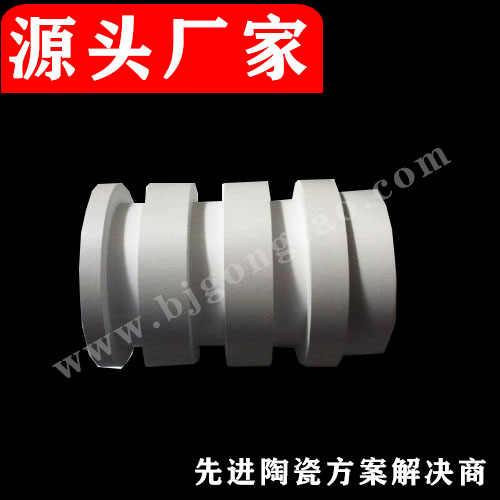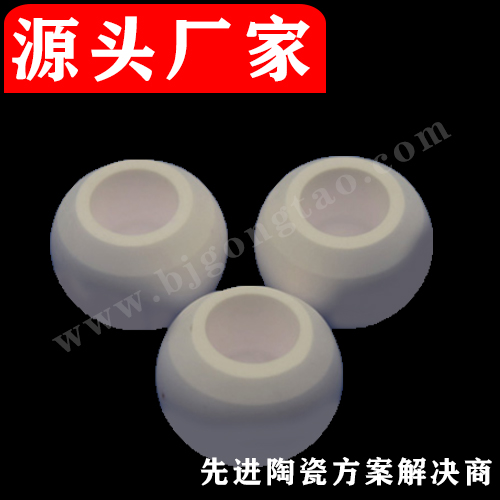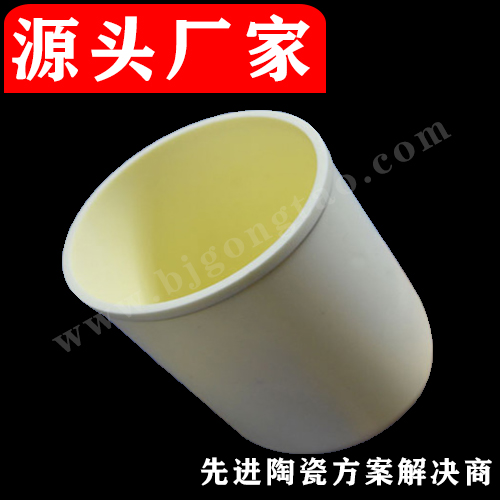
Suzhou Kaifa New Material Technology Co., Ltd.
Email:heqing@szkfxc.com
Email:sales@szbknm.com
Email:bkxc.bonnie@gmail.com
Precision grinding technology to make silicon nitride ceramic balls
The silicon nitride ceramic ball known as "the strongest bearing ball " is not only excellent in performance, but also widely used in wind turbines, high-speed precision spindles, high-temperature engines and other fields. Even its appearance is very explosive and black. Dazzlingly bright, there is a high-end fan (source from the picture below: Sinoma High-tech).

But the beautiful surface of the silicon nitride ball does not exist for good-looking, but because silicon nitride is hard and brittle in nature, it is very sensitive to defects caused by mechanical grinding and polishing, and the incomplete surface is easy to cause fatigue Failure , so you should try to ensure that its surface quality and roughness reach the best state before putting it into use.
It can be said that precision grinding and polishing quality are important factors that affect the performance and service life of silicon nitride bearing balls. Specifically , there are several ways to make them reach the " best state ", let ‘s briefly introduce them below.
1Maglev polishing technology
Magnetic levitation polishing technology is a new advanced ceramic finishing technology, which can obtain good surface roughness and dimensional accuracy. It is a method for processing flat, round hard and brittle materials with a high cost ratio, which is based on magnetic fluid. Based on dynamics, the main principle is shown in the figure below.

The silicon nitride rough balls are placed in a cylindrical container filled with a mixture of magnetic fluid, abrasive and water, and below them is a row of strip-shaped permanent magnets. Magnetic fluid is a colloidal suspension formed by dispersing ferromagnetic particles (usually colloidal Fe 3 O 4 ) in a liquid. It has magnetic properties, and a certain amount of non-magnetic material is added to the magnetic fluid to form a mixed liquid. Under the action of a special magnetic field with a magnetic field gradient, the magnetic particles move in the direction of a strong magnetic field, which produces reverse buoyancy on the abrasive and is suspended in the magnetic fluid. When the spindle rotates, under the action of friction and adhesive force, the ceramic ball revolves around the container and rotates, and at the same time, it slides relative to the grinding disc. The silicon nitride ceramic ball is ground by the abrasive suspended in the magnetic fluid and part of the abrasive is embedded in the surface of the grinding disc.
Because the pressure applied to the silicon nitride ceramic ball is very small, about 1N/ball, and it is elastically controllable, it greatly reduces the scratches and micro cracks on the surface of the ceramic ball caused by mechanical grinding. In order to further improve processing efficiency and processing quality and reduce surface defects, it is usually used in combination with chemical mechanical polishing technology in this process.
2Chemical mechanical polishing
Chemical mechanical polishing has the technical characteristics of high processing efficiency, low surface roughness, and small processing deterioration layer. It has been widely used in the surface finishing of metal materials of various functional ceramics and engineering ceramics. In the process of chemical mechanical polishing, nano-sized fine soft abrasive particles suspended in a liquid medium will be rubbed with the corresponding polishing liquid at the contact point of the abrasive particles and the workpiece to produce high temperature and high pressure, which will be produced in a very short time. The solid-phase reaction softens the surface of the material. The reaction product will be removed by the mechanical friction between the workpiece and the polishing disc in 0.1nm-level micro-units, thereby obtaining an extremely smooth surface.
 Image source: Suzhou Herit Electronics
Image source: Suzhou Herit Electronics
In the selection of abrasives, it should be noted that abrasive materials that are harder than the workpiece material cannot be selected, because the mechanical polishing of the hard abrasive material will play a leading role when it is working , but it will increase the defects on the surface of the workpiece. At present, more cerium oxide ( CeO 2 ) polishing liquid is used in the industry for chemical mechanical polishing of silicon nitride ceramic balls. One is because it can directly react with Si 3 N 4 to form a SiO 2 layer; the other is its The hardness is close to the hardness of SiO 2 and significantly lower than the hardness of Si 3 N 4 , so almost no damage such as scratches is caused to the silicon nitride balls.
3Ultrasonic vibration assisted polishing
Ultrasonic machining is a process that uses ultrasonic vibration tools to produce abrasive impact, polishing, hydraulic impact and cavitation in abrasive liquid media or dry abrasives to remove materials. Someone has tried to increase the ultrasonic torsional vibration of the upper grinding disc during the rough grinding stage, so that the processing speed is increased by 2 to 3 times compared with the traditional method.

Ultrasonic vibration and non-ultrasonic vibration processing surface topography
The picture above is the SEM comparison of the surface morphology of the silicon nitride ceramics grinded by the researchers with and without ultrasonic vibration in the experiment. It can be found that the surface without ultrasonic vibration is severely broken, and there are many exfoliation pits formed along the crack propagation, and many small silicon nitride particles are distributed at the bottom of the pit, which is formed due to the crushing of the abrasive particles to cause the material to break. After the ultrasonic vibration is applied, abrasive particles periodically hit the ceramic surface, and a large number of lateral cracks are generated near the surface of the workpiece. The lateral cracks expand and close and cause material removal. While improving the removal efficiency, it has little effect on the quality of the processed surface, and only a few defects are distributed on the surface of the workpiece.
In addition, some researchers combined the magnetorheological polishing technology with ultrasonic technology to polish the silicon nitride ceramic balls. The results show that the material removal rate after ultrasonic polishing is higher than that without ultrasonic vibration, and after ultrasonic vibration polishing The surface Ra value of the silicon nitride ceramic ball is reduced from 0.260m to 0.025m.
4Cluster magnetorheological polishing
In order to achieve high-efficiency processing of high-precision ceramic balls, a research team proposed a new cluster magnetorheological polishing ceramic ball technology, that is, on the back of the upper and lower polishing discs made of non-magnetic materials, a number of small Magnetic objects, and then inject the magnetorheological polishing fluid into the polishing disc, using the magnetorheological polishing fluid to rheology in the magnetic field, so that it forms a cluster magnetorheological effect polishing pad above the magnetic pole.
Note: The magnetorheological fluid is mainly composed of discrete micron-scale magnetic particles, carrier fluid and surface-active agent. In the absence of an external magnetic field, the magnetic particles are irregularly distributed, and the magnetorheological fluid is in a flowable liquid state; under the action of an external magnetic field, the magnetic particles are distributed in a chain shape, and their rheological characteristics change sharply (millisecond level), appearing similar The nature of the solid; after removing the magnetic field, it will immediately restore the original liquid properties.
The cluster rheological effect polishing pads formed on the upper and lower polishing discs can be used to cover and polish ceramic balls, and there is a certain gap between the two. The flexible "small grinding head" formed by the polishing liquid can quickly move relative to the workpiece, subjecting the surface of the workpiece to a large shearing force, thereby removing the material on the surface of the workpiece. During the machining process, since the magnetorheological polishing pad is always covered with ceramic balls, the rigid contact becomes a flexible contact, which can greatly reduce the secondary deformation caused by grinding impact and heating.
source:
Ultra-precision grinding technology of silicon nitride ceramic balls, Lu Binghai, Yuan Julong, Lin Xu.
Introduction to Ultra-Precision Processing Technology of Silicon Nitride Balls by Cathie Montanez
Research on Ultrasonic Vibration Grinding Mechanism and Surface Quality of Silicon Nitride Ceramics, Zhou Xuegang.
This information originates from the Internet for academic exchange only. If infringement please contact us to delete immediately





